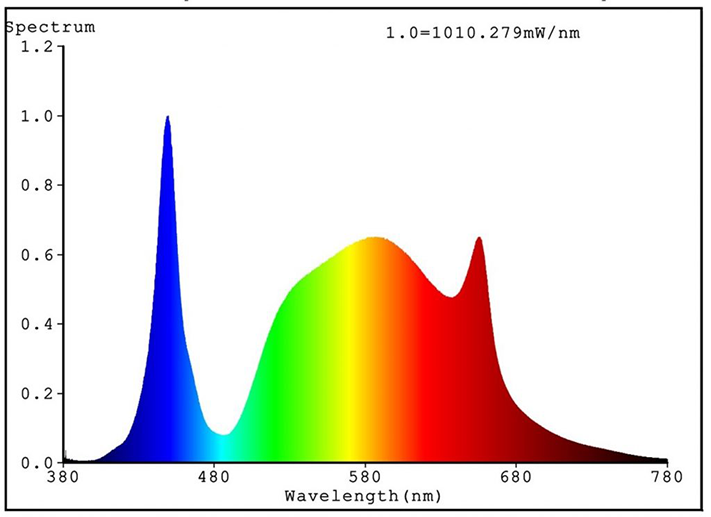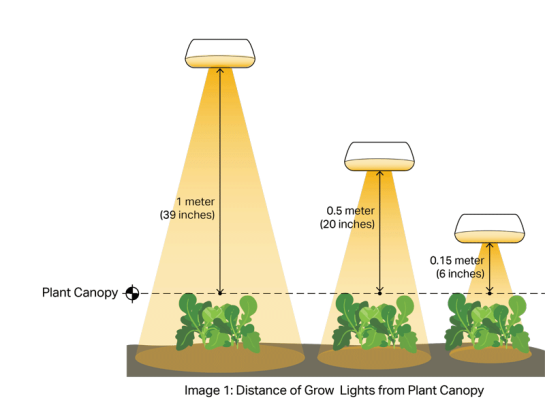Artificial light is used as crop growth light to imitate sunlight. Indoor growers may plant different plants because there is no specific growing place, or they may make some growth changes in winter. But in any case, indoor agricultural lights do bring some benefits to indoor growers, so they can shorten the planting cycle or help crops grow healthier.
Plants do not need all the wavelengths of visible light to grow but only absorb certain wavelengths. For example, red light near 660nm, the peak of chlorophyll absorption during photosynthesis and flowering, promotes growth. For stamens, blue light at 450nm promotes growth.
280 ~ 315nm: minimal impact on morphology and growth process.
315 ~ 400nm: Less absorption of chlorophyll, affecting photoperiod effect and preventing stem elongation.
400 ~ 520nm (blue): the absorption ratio of chlorophyll and carotenoids is the largest and greatest influence.
520 ~ 610nm (green): the absorption rate of the pigment is not high.
610 ~ 720nm(red): Low chlorophyll absorption rate, which has a significant impact on photosynthesis and photoperiod effects.
720 ~ 1000nm: Low absorption rate, stimulate cell elongation, affect flowering and seed germination.
>1000nm: converted into heat.
From the above data, different wavelengths of light have different effects on plant photosynthesis. The light required for plant photosynthesis has a wavelength of about 400 ~ 720nm. The light of 400 ~ 520nm (blue) and 610 ~ 720nm (red) contribute the most to photosynthesis. The light of 520 ~ 610nm (green) is absorbed by plant pigments at a very low rate.
The chromatogram ratio of the red and blue lights of the plant lights is generally between 5:1 and 10:1, and the ratio of 7 to 8:1 is usually available. Of course, if conditions permit, the ratio of red and blue light can be adjusted according to the plant growth cycle.
When the plant photosynthesis and flowering, chlorophyll absorption peak near 660nm red light can promote growth. For stamens, blue light at 450nm promotes growth.

US-based Curtis Mathes Grow Lights Inc (CMGL) has launched a novel control, monitoring, and alert system designed to provide WiFi-based automated control of its Harvester lighting units; while Valoya, a provider of high-end, energy-efficient LED grow lights for use in crop science, vertical farming and medicinal plants cultivation, has today announced a licensing program making its patented technology available to LED manufacturers and horticultural LED fixture providers.
More and more growers are beginning to use planting lights, especially LED planting lights, but there is still a lot of confusion about how to use them. One of the most common problems with using LED grow lights is how far they should be from the plants.
When evaluating the appropriate amount of PPFD, growers should not only average the area under the light but also average the entire area, because the light from a fixture will overflow into the surrounding area. In addition, when evaluating this metric, the distance above the tree canopy should be taken into account in this equation.
Generally speaking, the LED grow light should be 12-30 inches away from the top of the plant. As the plants grow, you need to adjust your lights to maintain a consistent distance from the plants. However, the distance will vary depending on the wattage of your light, the type of plants, and the amount of ambient light.
The main consideration in determining the distance between the LED grow light and the plant is the wattage of the LED light.
Generally, most people use simple chains or cables to adjust the height of their grow lights, which can raise or lower the lights according to the height of the plants.


